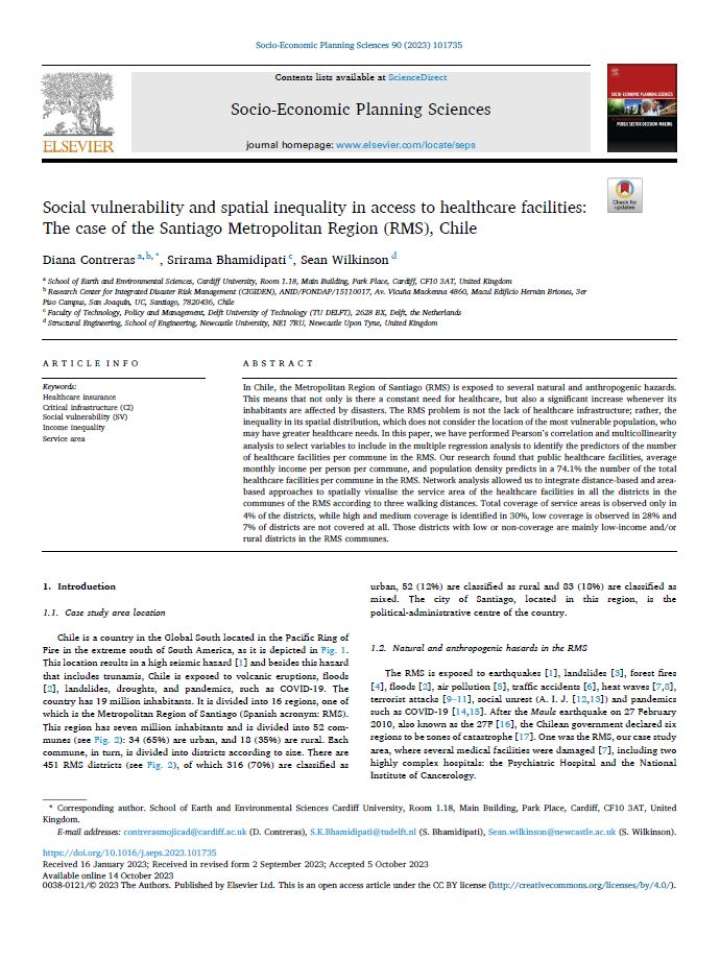Social vulnerability and spatial inequality in access to healthcare facilities: The case of the Santiago Metropolitan Region (RMS), Chile
In this paper, researchers performed Pearson's correlation and multicollinearity analysis to select variables to include in the multiple regression analysis to identify the predictors of the number of healthcare facilities per commune in the RMS (Chile's Metropolitan Region of Santiago). The RMS is exposed to several natural and anthropogenic hazards. This means that not only is there a constant need for healthcare, but also a significant increase whenever its inhabitants are affected by disasters.
This research found that public healthcare facilities, average monthly income per person per commune, and population density predicts in a 74.1% the number of the total healthcare facilities per commune in the RMS. Network analysis allowed us to integrate distance-based and area-based approaches to spatially visualise the service area of the healthcare facilities in all the districts in the communes of the RMS according to three walking distances. Total coverage of service areas is observed only in 4% of the districts, while high and medium coverage is identified in 30%, low coverage is observed in 28% and 7% of districts are not covered at all. Those districts with low or non-coverage are mainly low-income and/or rural districts in the RMS commune.
Explore further
